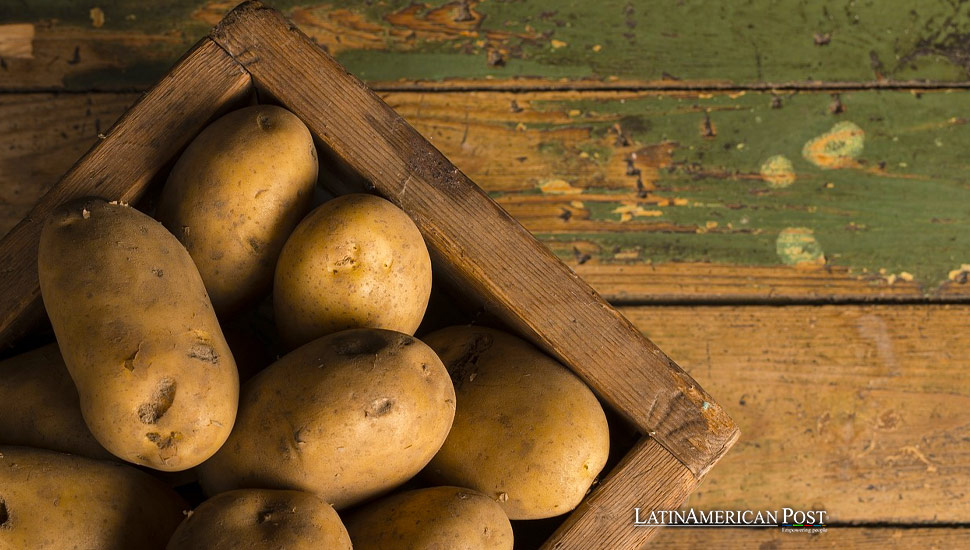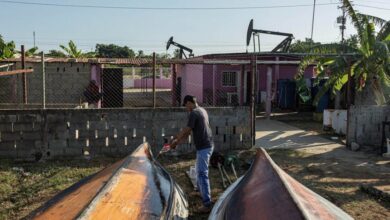Potato Production in Peru Declines Due to Climate Vulnerability

Peru marks International Potato Day, focusing on the tuber’s origins and economic and nutritional value despite a notable drop in production due to climatic factors and pests, highlighting the need for improved agricultural practices.
As Peru celebrates International Potato Day this Thursday, the nation reflects on the rich history and significance of the potato, a crop deeply intertwined with its culture and economy. However, this year’s festivities are tempered by concerns over a decline in production for the first time in seven years, attributed to climate vulnerability and pest infestations. The Red de Estudios para el Desarrollo (Redes) has raised alarms about these challenges, emphasizing the need for strategic interventions to protect this vital crop.
The potato, or “papa” as it is known locally, originates in the Andean region, where it has been cultivated for thousands of years. Peru, recognized as the birthplace of the potato, boasts over 3,000 varieties of this tuber, which plays a crucial role in the country’s agriculture and cuisine. The United Nations officially adopted International Potato Day to underscore the potato’s nutritional and economic importance, with Peru leading Latin America in production.
Production Decline and Contributing Factors
2023 Peru’s potato production fell to 5.4 million tons from 6 million tons in 2022. This 10% decline marks the first drop in seven years, with climatic factors and pests like the Papakura worm (potato tuber moth) being the primary culprits. Redes highlighted the impact of El Niño Costero and prolonged droughts on potato yields, particularly in regions dependent on natural rainfall for irrigation.
“Sixty-four percent of potato crops in Peru rely entirely on natural rainfall, making them highly susceptible to droughts,” stated Redes in a communiqué. The severe droughts of 2023 significantly affected these rainfed crops, leading to reduced yields and financial losses for farming families.
The southern department of Puno experienced the most severe impact, with production plummeting from 998,000 tons in 2022 to 596,000 tons in 2023. This decline mirrors levels not seen since 2011, reflecting the harsh reality of climate change on traditional agriculture. César García, an economist at Redes, stressed the economic repercussions of such fluctuations, noting the potato’s critical role in Peru’s food industry and its contribution to employment.
“Potato cultivation generates thousands of jobs and is vital to our economy,” García noted. “To ensure sustainable production, we must address the issues affecting farming families and their incomes.”
Productivity Challenges and Global Comparisons
Peru’s potato productivity remains a concern, with an average yield of 16.9 tons per hectare, significantly lower than the 30 tons per hectare achieved by neighboring countries like Argentina, Brazil, and Mexico. According to the Food and Agriculture Organization (FAO), Peru is 87th globally in terms of productivity per hectare.
García called for enhanced training for farmers on pest control and prevention, the adoption of advanced agricultural technologies, and high-quality, genetically improved seeds tailored to specific geographic conditions. “Improving productivity is essential for maintaining Peru’s position as a leading potato producer and ensuring the livelihood of our farmers,” he added.
International Potato Day reminds us of the potato’s global importance, from its nutritional benefits to its economic impact. In Peru, the day is celebrated with events that highlight the potato’s rich diversity and its central role in the nation’s heritage. The potato is not just a staple food; it is a symbol of cultural identity and agricultural resilience.
Addressing Climate Vulnerability
Potato crops’ vulnerability to climate change is a growing concern. The 2023 production drop underscores the need for adaptive strategies to mitigate the effects of unpredictable weather patterns. Developing and implementing climate-resilient agricultural practices is crucial for sustaining potato production in the face of environmental challenges.
Pest infestations, particularly from the Papakura worm, have further complicated potato cultivation. Effective pest management strategies, including biopesticides and integrated pest management (IPM) practices, can help reduce the impact of these pests on potato yields. Training farmers in these techniques is essential for protecting crops and ensuring stable production levels.
The Role of Technology in Agriculture
Technological advancements offer promising solutions to the challenges faced by potato farmers. Using sensors, drones, and data analytics, precision agriculture can optimize irrigation, fertilization, and pest control, enhancing productivity and sustainability. Investing in such technologies can help Peru’s farmers adapt to changing conditions and improve their yields.
Support from government and agricultural institutions is vital for addressing potato production issues. Policies that promote sustainable farming practices, provide financial assistance to farmers, and invest in agricultural research can significantly enhance productivity and resilience. Collaborative efforts between government agencies, research institutions, and farming communities are essential for driving these initiatives forward.
The Future of Potato Farming in Peru
Looking ahead, the future of potato farming in Peru will depend on the ability to adapt to and mitigate the impacts of climate change and pests. Strengthening the agricultural sector through innovation, education, and support will be vital to maintaining the country’s position as a leading potato producer. Ensuring the sustainability of potato farming is not just an economic necessity but also a cultural imperative, preserving a vital aspect of Peru’s heritage.
Also read: Peru’s Military Vehicle Plant Boosts Economic and Defense Sectors
As Peru celebrates International Potato Day, the nation acknowledges the potato’s profound significance while confronting challenges threatening its production. The decline in 2023 highlights the urgent need for adaptive strategies and technological innovations to safeguard this essential crop. By investing in sustainable practices and supporting farmers, Peru can continue to thrive as a global leader in potato production, honoring its rich agricultural heritage and securing a prosperous future for its farming communities.




